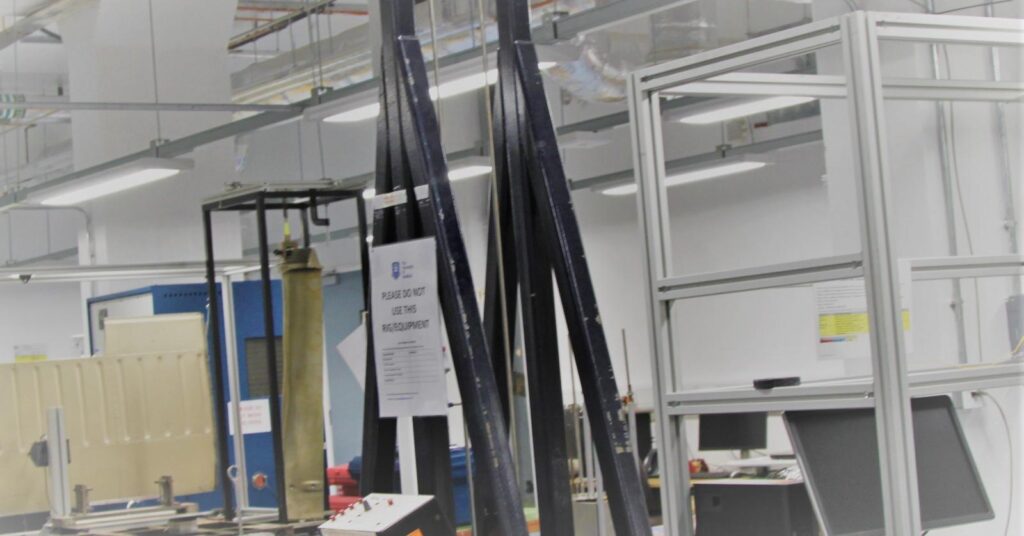A drop weight test is a pivotal tool for evaluating the toughness and brittleness of materials under real-world conditions. Tests such as these guarantee that metals used in construction, automotive, aerospace, and numerous other sectors meet the highest safety and performance standards.
As industries continue to push the boundaries of technology and material science, the demand for comprehensive testing methods that can accurately predict material behavior under stress has never been greater. Compliance with strict compliance standards goes beyond regulation; it’s a commitment to quality and safety. Drop weight testing provides invaluable insight into material properties, guiding the development of more durable and reliable metal products. We will now explore the nuances of drop weight testing, including its methodologies, standards, and state-of-the-art drop weight testing equipment that support this essential process.
Explaining Drop Weight Testing
Materials’ impact toughness and brittleness are evaluated using drop weight testing in the metal industry. In different applications, metal products must be tested to determine how they will behave when subjected to sudden forces or impacts.
In this test, a weight is dropped from a predetermined height onto a specimen of the material being tested. The main objective is to simulate real-life conditions under which the material might experience sudden impacts or stresses. In this setup, the energy absorbed by the material during fracture is directly correlated with its toughness. Under such conditions, metals, alloys, and composites can be evaluated for their performance.
Automotive, aerospace, and construction industries require high reliability and performance under stress, so understanding toughness and brittleness of materials is crucial. Material used in the manufacture of vehicles, for instance, must withstand impacts without failing catastrophically. Aerospace applications require materials that can withstand the forces experienced during flight and landing, while construction materials must be able to support heavy loads and withstand environmental pressures.
The drop weight test provides engineers and designers with invaluable insight into material properties, enabling them to choose the most appropriate materials for specific applications. As a result of understanding material behavior under impact, industries can improve the durability and safety of their products, ultimately leading to innovations in materials science and engineering that meet society’s and technology’s changing needs.
Standards for Drop Weight Testing
In the metal industry, drop weight testing is governed by international and national standards that ensure consistency, reliability, and safety. In this domain, ASTM standards such as E208 and a number of ISO standards provide comprehensive guidelines for conducting drop weight tests. Testing methodologies, equipment specifications, and criteria for interpreting the results of the tests are outlined in these standards.
The ASTM E208 standard, for instance, outlines the procedure for drop-weight tear tests on ferritic steels. The standard is crucial for industries where understanding the material’s resistance to fracture is crucial, such as pipeline transportation and structural applications. As part of the test, it specifies the size, shape, and manner in which weight impacts the specimen, as well as how to interpret the resulting fracture to determine the material’s toughness.
As well, ISO standards for drop weight testing cover a wide range of materials and conditions, ensuring that materials can be evaluated under conditions corresponding to real-world applications. Manufacturers, suppliers, and regulatory bodies can communicate and enforce quality and safety requirements effectively using these standards, which provide a common language and set of expectations for material properties.
Keeping these standards up-to-date ensures uniformity in testing outcomes, which, in turn, ensures that materials used in critical applications can withstand the demands placed upon them. Using these guidelines, industries can reduce the risk of material failure, enhancing the safety and reliability of products ranging from automotive components to infrastructure projects. Moreover, compliance with established testing standards supports the global exchange of goods by ensuring that materials meet the rigorous requirements set forth by different countries and regulatory agencies, which in turn facilitates compliance with safety regulations as well as promotes confidence in the quality of materials used across a wide range of industries.
Equipment for Drop Weight Testing
Materials’ impact toughness is assessed using specialized equipment designed for drop weight testing. A drop weight tear tester is central to this process, which measures the behavior of materials under sudden impact. Testers of this type deliver controlled impacts from a specific height, allowing the weight and height to be adjusted to simulate various impact conditions. To test a broad range of materials under conditions that are similar to actual scenarios, it is essential to have this kind of versatility.
Technological advancements have significantly improved drop weight testing equipment. Modern machines incorporate automation for consistent test execution, and feature advanced precision measurement tools to capture detailed information about the impact and material response. Innovations such as these not only improve test results accuracy but also increase the efficiency of the testing process. This enables material evaluation to be completed faster.
Ensure that your drop weight testing equipment complies with relevant standards, like ASTM and ISO. Moreover, the equipment should offer the flexibility to adjust test parameters to accommodate a variety of materials and testing requirements. Calibration and upkeep are also critical considerations in order to keep testing equipment performing at its best for as long as possible.
The importance of purchasing drop-weight testing equipment from a reliable manufacturer cannot be overstated. Besides providing equipment that meets industry standards, trusted suppliers also provide installation, training, and after-sales service. In this way, the testing equipment continues to be an asset for accurate and efficient material testing, supporting the ongoing requirements of the metal industry for developing and verifying safe and efficient materials.






